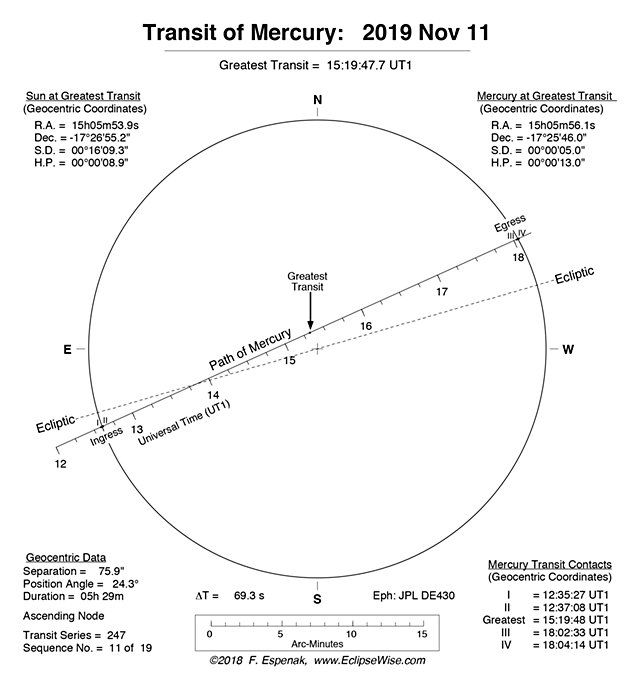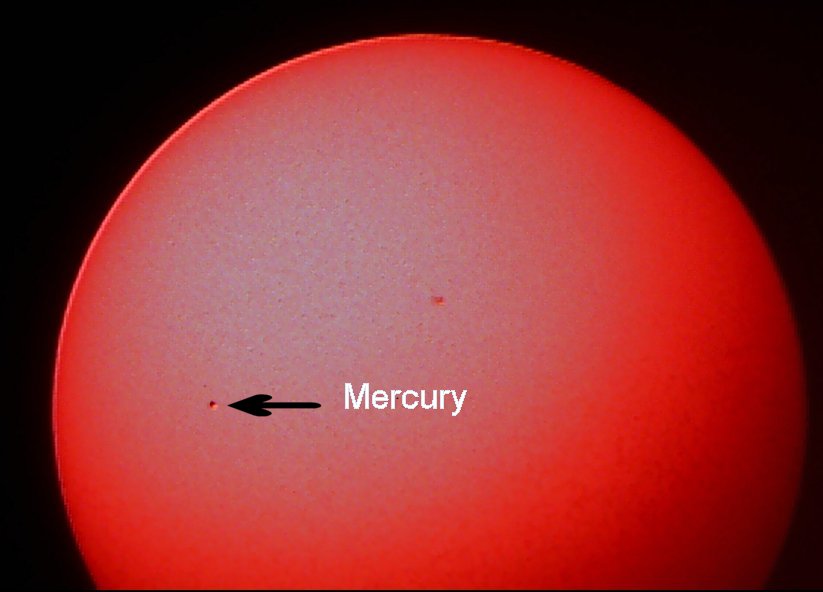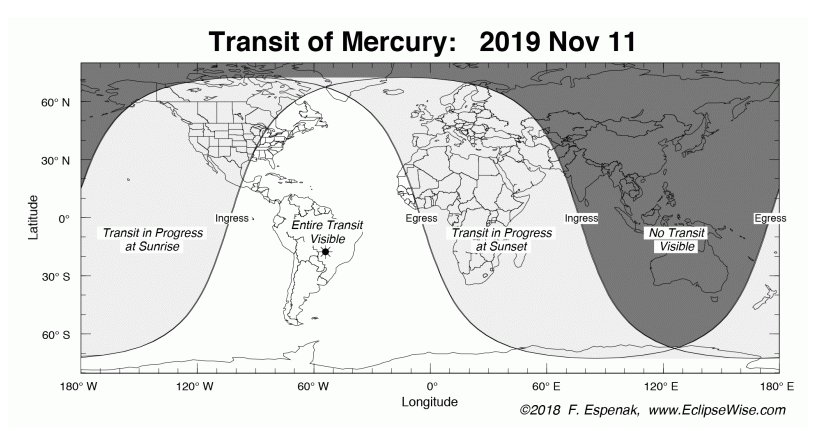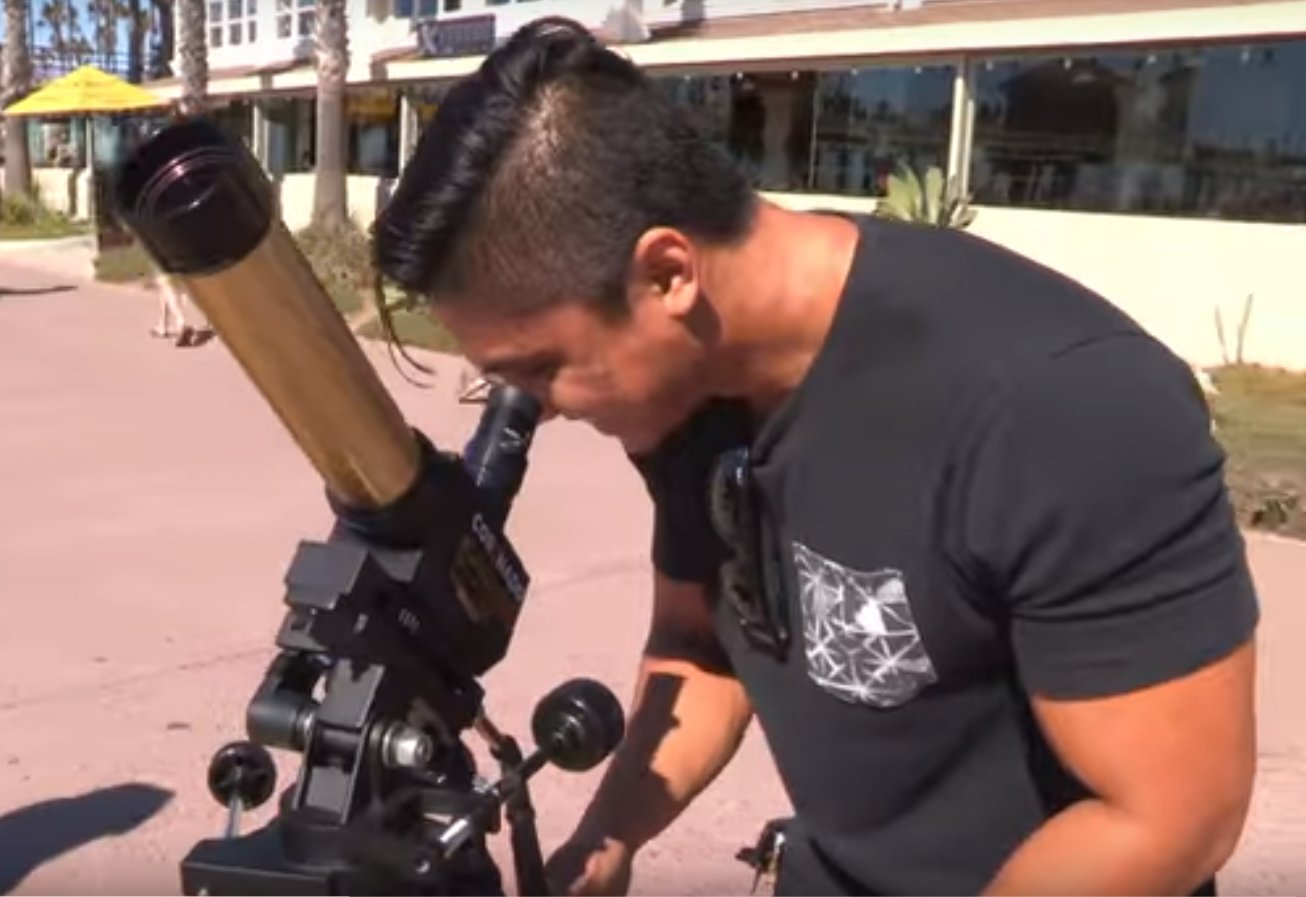Two years ago in August of 2017 the United States was treated to the amazing celestial event of a total eclipse of the Sun that traveled across the nation from Oregon to South Carolina. (See my post of 24Aug2017) Of course everybody knows that a Solar eclipse only happens because the Moon can pass in front of the Sun blocking out its light.

The Moon isn’t the only astronomical body that can pass in front of the Sun however. The two inner planets Mercury and Venus can also cross between the Sun and our planet. But because they are so much further from the Earth than our Moon is they only cover up a very small portion of the Sun’s disk, so small you’d never know that it was happening unless you purposely look for it.
Also because Venus and Mercury are further away than our Moon transits occur less frequently than eclipses. While a Solar eclipse happens somewhere on Earth almost every year there will only be 14 transits of Mercury and only two transits of Venus this entire century. The transits of Venus are already past by the way, the next one is in December of 2117! And because the two planets are further away they appear to move more slowly across the face of the Sun, taking hours to complete a transit instead of the four minutes of total eclipse I got to see in 2017.

I’ve been fortunate enough to see both kinds of transit, a transit of Venus back on the 8th of June in 2004 and a transit of Mercury on the 9th of May 2016. I had not yet bought a Solar telescope back in 2004 so I have no pictures of the Venus transit but I had all my equipment ready in 2016 so even though the day was pretty cloudy I did manage to get a few pictures. (See image below)

As with a Solar eclipse whether or not you are able to see a transit depends on whether the Sun is out, in other words is it daylight where you live while the transit is happening. The map below shows how much of the transit will be visible in your location.

Once again I’m going to be lucky because the eastern US gets to see the entire event, as does the whole of South America. For the middle part of North America and the west coast however the transit will already be happening as the Sun rises in your location. For Europe and most of Africa the opposite is true, you will be able see the beginning of the transit in the late afternoon but the Sun will set before the event is over. Asia and Australia I’m afraid you’re out of luck this time around but the entire transit is going to be live streamed so check out the link below. https://www.virtualtelescope.eu/2019/10/16/the-11-november-2019-mercury-transit-online-observing-session/
If you are going to try to see something of the Mercury transit yourself PLEASE DO NOT LOOK DIRECTLY AT THE SUN WITHOUT EYE PROTECTION!! Only a fool without a bit of common sense looks directly at the Sun without eye protection. As evidence of that fact the image below shows Donald Trump watching the 2017 Solar eclipse without eye protection.

If you happen to still have your eclipse glasses from 2017 they will protect your eyes although Mercury will only appear as a tiny dot on the Sun’s disk. If you have lost your glasses or if you’d like a better view of the transit remember once again that the event will be live streamed. Now all I need is some good weather, I’m keeping my fingers crossed.

